
Detective fiction is a subgenre of crime fiction and mystery fiction in which an investigator or a detective—whether professional, amateur or retired—investigates a crime, often murder. The detective genre began around the same time as speculative fiction and other genre fiction in the mid-nineteenth century and has remained extremely popular, particularly in novels. Some of the most famous heroes of detective fiction include C. Auguste Dupin, Sherlock Holmes, and Hercule Poirot. Juvenile stories featuring The Hardy Boys, Nancy Drew, and The Boxcar Children have also remained in print for several decades.

Crime fiction, detective story, murder mystery, mystery novel, and police novel are terms used to describe narratives that centre on criminal acts and especially on the investigation, either by an amateur or a professional detective, of a crime, often a murder. It is usually distinguished from mainstream fiction and other genres such as historical fiction or science fiction, but the boundaries are indistinct. Crime fiction has multiple subgenres, including detective fiction, courtroom drama, hard-boiled fiction, and legal thrillers. Most crime drama focuses on crime investigation and does not feature the courtroom. Suspense and mystery are key elements that are nearly ubiquitous to the genre.

The historical mystery or historical whodunit is a subgenre of two literary genres, historical fiction and mystery fiction. These works are set in a time period considered historical from the author's perspective, and the central plot involves the solving of a mystery or crime. Though works combining these genres have existed since at least the early 20th century, many credit Ellis Peters's Cadfael Chronicles (1977–1994) for popularizing what would become known as the historical mystery. The increasing popularity and prevalence of this type of fiction in subsequent decades has spawned a distinct subgenre recognized by the publishing industry and libraries. Publishers Weekly noted in 2010 of the genre, "The past decade has seen an explosion in both quantity and quality. Never before have so many historical mysteries been published, by so many gifted writers, and covering such a wide range of times and places." Editor Keith Kahla concurs, "From a small group of writers with a very specialized audience, the historical mystery has become a critically acclaimed, award-winning genre with a toehold on the New York Times bestseller list."

Dame Edith Ngaio Marsh was a New Zealand mystery writer and theatre director. She was appointed a Dame Commander of the Order of the British Empire in 1966.
Reginald Charles Hill FRSL was an English crime writer and the winner in 1995 of the Crime Writers' Association Cartier Diamond Dagger for Lifetime Achievement.
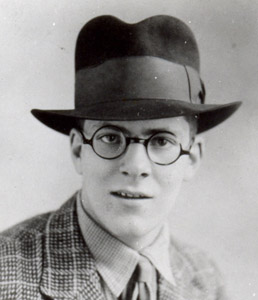
Ruthven Campbell Todd was a Scottish poet, artist and novelist, best known as an editor of the works of William Blake, and expert on his printing techniques. During the 1940s he also wrote detective fiction under the pseudonym R. T. Campbell and children's fiction during the 1950s.

Peter (Harmer) Lovesey, also known by his pen name Peter Lear, is a British writer of historical and contemporary detective novels and short stories. His best-known series characters are Sergeant Cribb, a Victorian-era police detective based in London, and Peter Diamond, a modern-day police detective in Bath.

The Dead Man's Knock, first published in 1958, is a detective story by John Dickson Carr which features Carr's series detective Gideon Fell. This novel is a mystery of the type known as a locked room mystery.
Jean Stubbs was a British writer.

Spotted Hemlock is a 1958 mystery detective novel by the British writer Gladys Mitchell. It is the thirty first in the long-running series of books featuring Mitchell's best known creation, the psychoanalyst and amateur detective Mrs Bradley. It has been considered one of Mitchell's best novels along with other works such as The Saltmarsh Murders, Death at the Opera and The Rising of the Moon.
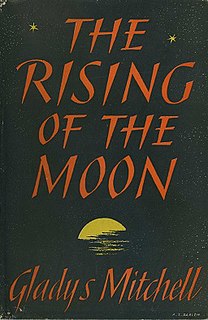
The Rising of the Moon is a 1945 mystery detective novel by the British writer Gladys Mitchell. It is the eighteenth in her long-running series featuring the psychoanalyst and amateur detective Mrs Bradley. It has been described as one of the best of Mitchell's novels.

Laurels are Poison is a 1942 mystery detective novel by the British writer Gladys Mitchell. It is the fourteenth in her long-running series featuring the psychoanalyst and amateur detective Mrs Bradley. It was Mitchell's own favourite among her novels and has been considered her best by other critics. It introduced the character of Laura Menzies who became recurring assistant of Mrs Bradley in subsequent novels.
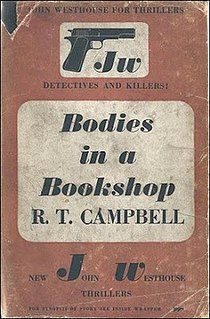
Bodies in a Bookshop is a 1946 mystery detective novel by the British author Ruthven Todd, written under the pen name of R.T. Campbell. It was one of several novels featuring the botanist and amateur detective Professor John Stubbs.

The Death Cap is a 1946 mystery detective novel by the British author Ruthven Todd, written under the pen name of R.T. Campbell. It was one of several novels featuring the botanist and amateur detective Professor John Stubbs.
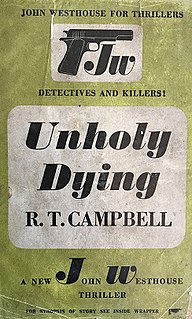
Unholy Dying is a 1945 mystery detective novel by the British author Ruthven Todd, written under the pen name of R.T. Campbell. It was the first in a series of novels featuring the botanist and amateur detective Professor John Stubbs. It has been republished in 1985 and 2019 by Dover Publications.

Death for Madame is a 1946 mystery detective novel by the British author Ruthven Todd, written under the pen name of R.T. Campbell. It was one of several novels featuring the botanist and amateur detective Professor John Stubbs. It takes the form of a closed circle of suspects investigation. It has been republished in 2018 by Dover Publications.

The Mystery of Number 47 is a 1912 comedy mystery thriller novel by the British writer J. Storer Clouston. Living in a quiet suburb of London and writing detective novels under an assumed name, Irwin Molyneux is suddenly drawn into a real-life case when he is sought by Scotland Yard for the murder of his wife due to a series of misunderstandings. It was originally published in London by Mills & Boon under the title His First Offence.
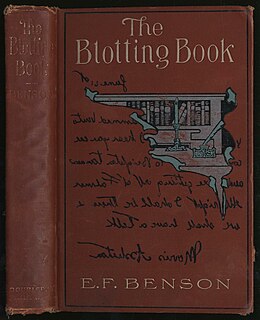
The Blotting Book is a 1908 mystery crime novel by the British writer E.F. Benson, later better known as the author of the Mapp and Lucia series. It was one of only two ventures he made into the genre during his prolific career along with The Luck of the Vails (1901). It takes place in Brighton and the nearby South Downs.
















